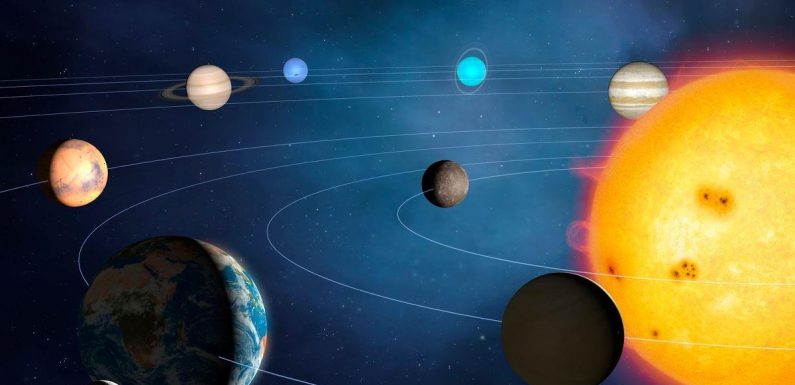
Space weather forecasters have predicted the Earth is set to have a stream of charged particles "lashed" at it.
A hole has opened in the southern region of the Sun and is spewing a stream of charged particles at the Earth.
NASA's Solar Dynamic Observatory (SDO) has managed to snap images that reveal a large "coronal hole" in the outer atmosphere of the Sun – the corona.
The stream of "gaseous material" that has escaped the hole is expected to hit the planet between Saturday and Sunday, the Express reports.
According to the website SpaceWeather.com, this could result in some minor geomagnetic unrest in the planet's magnetosphere – the region of space dominated by Earth's magnetic field.
Solar winds are a constant stream of plasma that flows from the Sun's corona and out into space.
The streams escape the corona, which is the Sun's outermost layer that reaches temperatures of up to 1.1 million C.
The stream heading towards Earth is expected to produce some beautiful aurora effects in the polar regions.
And the good news is that the forecast does not predict any impacts on technology or communications.
SpaceWeather.com's astronomers wrote: "Earth is exiting one solar wind stream. Another is on the way.
"Flowing from a southern hole in the sun's atmosphere, the gaseous material is due to arrive on November 21 to 22.
"NOAA forecasters say that a corotating interaction region (CIR) travelling just ahead of the stream could spark geomagnetic activity and Arctic auroras on November 20."
CIRs describe a compression region that forms ahead of a coronal hole stream.
They form as a result of slower solar winds interacting with the higher-speed stream.
According to the American Meteorological Society, they most often develop ahead of "more persistent coronal holes".
When they reach the Earth, the interplanetary magnetic field strength increases and can trigger solar storms.
For the latest breaking news stories and incredible tales from the Daily Star, sign up for our newsletter by clicking here.
Solar storms are ranked on a scale of "G1 Minor" to "G5 Extreme".
At the lower end of the scape, the US Space Weather Prediction Center (SWPC) says minor storms can cause weak power grid fluctuations and disturb satellite operations.
According to the latest SWPC forecast, the inbound solar winds are not expected to have any noticeable impact on the planet.
Instead, the three-day forecast predicts "unsettled to active levels" of geomagnetic activity "due to coronal hole high-speed stream (CH HSS) effects".
Similarly, the SWPC does not expect any radio blackouts over the weekend.
Source: Read Full Article

